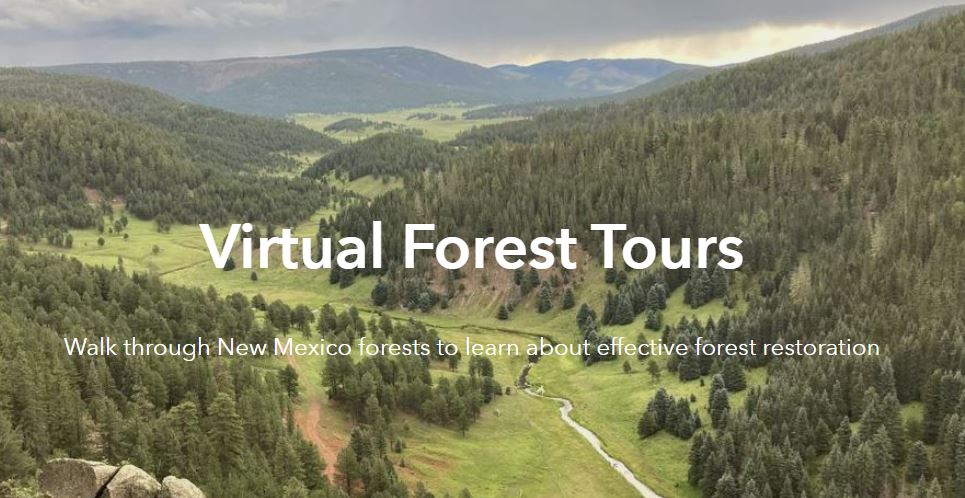
Virtually walk through New Mexico forests to learn about effective forest restoration.
What should a forest look like after a restoration project? In an age of increasing threats to the health and productivity of ecosystems, restoration and maintenance of ecosystem function and resilience should be an integral part of forest management plans. Desired conditions include attributes and characteristics that comprise structure, function, and composition of resilient systems while providing services that benefit both people and nature. One common result of restoration protocols, especially in southwestern ponderosa pine, is a residual stand with grouped trees and much more grass on the forest floor.
At NMFWRI, we work with local and state landowners to restore and manage their land to create healthier and more resilient forests across New Mexico. Visit our virtual forest tours to learn more about New Mexico forests and the restoration techniques that landowners have used to make their forests more resilient and sustainable These Story Maps highlights different examples of forest restoration actives occurring in our state.
Forest Visualization Virtual Tours

